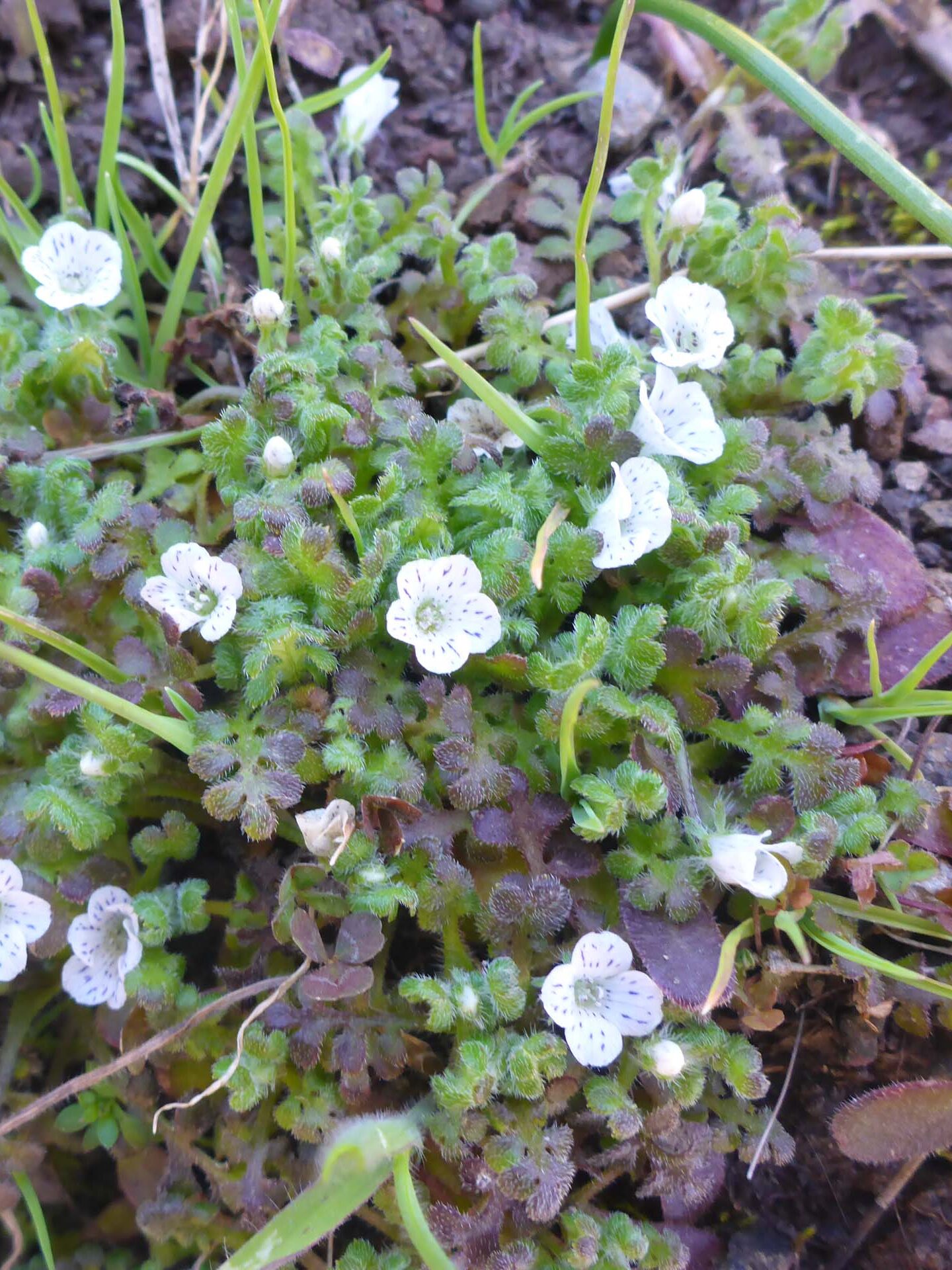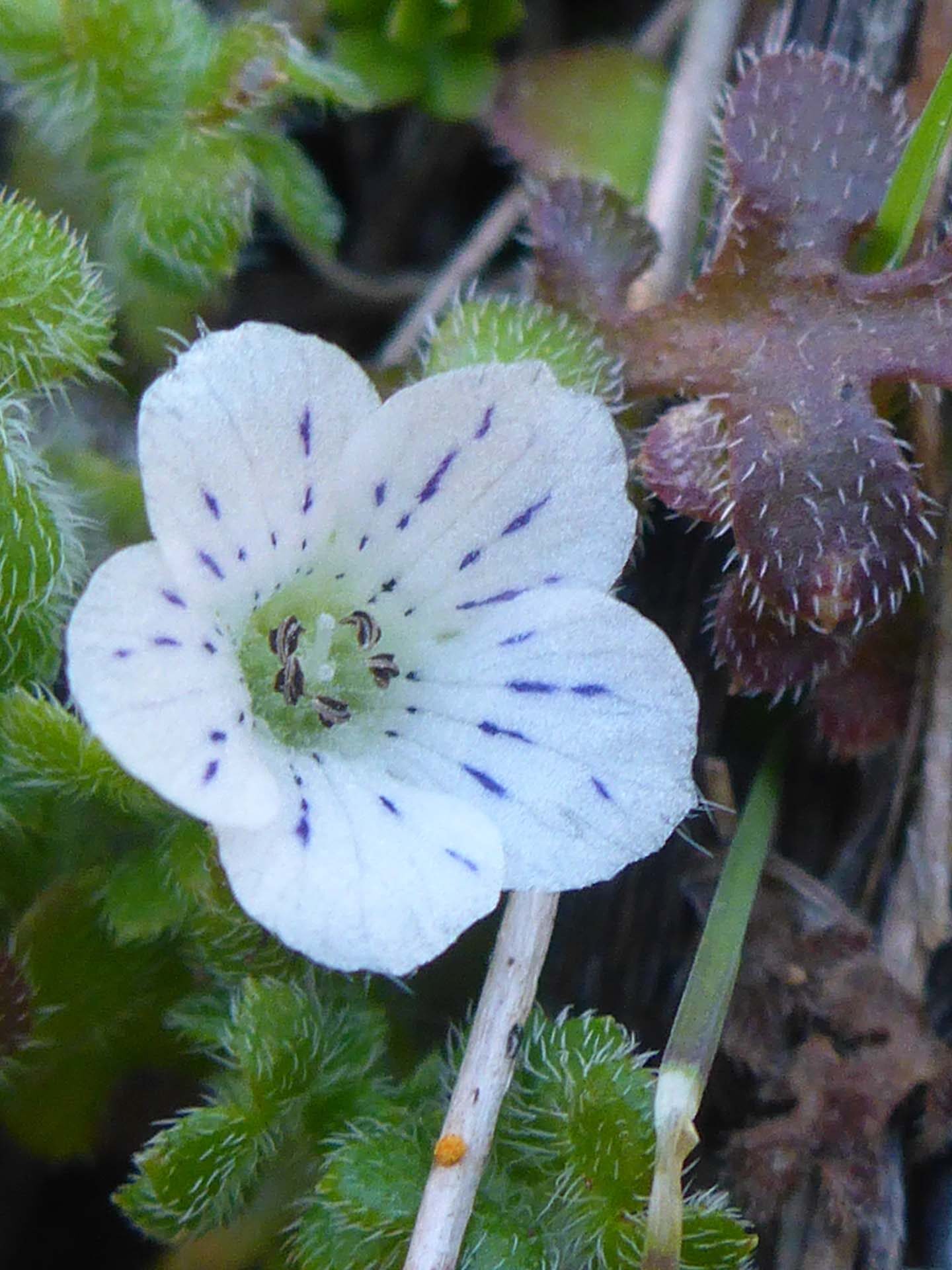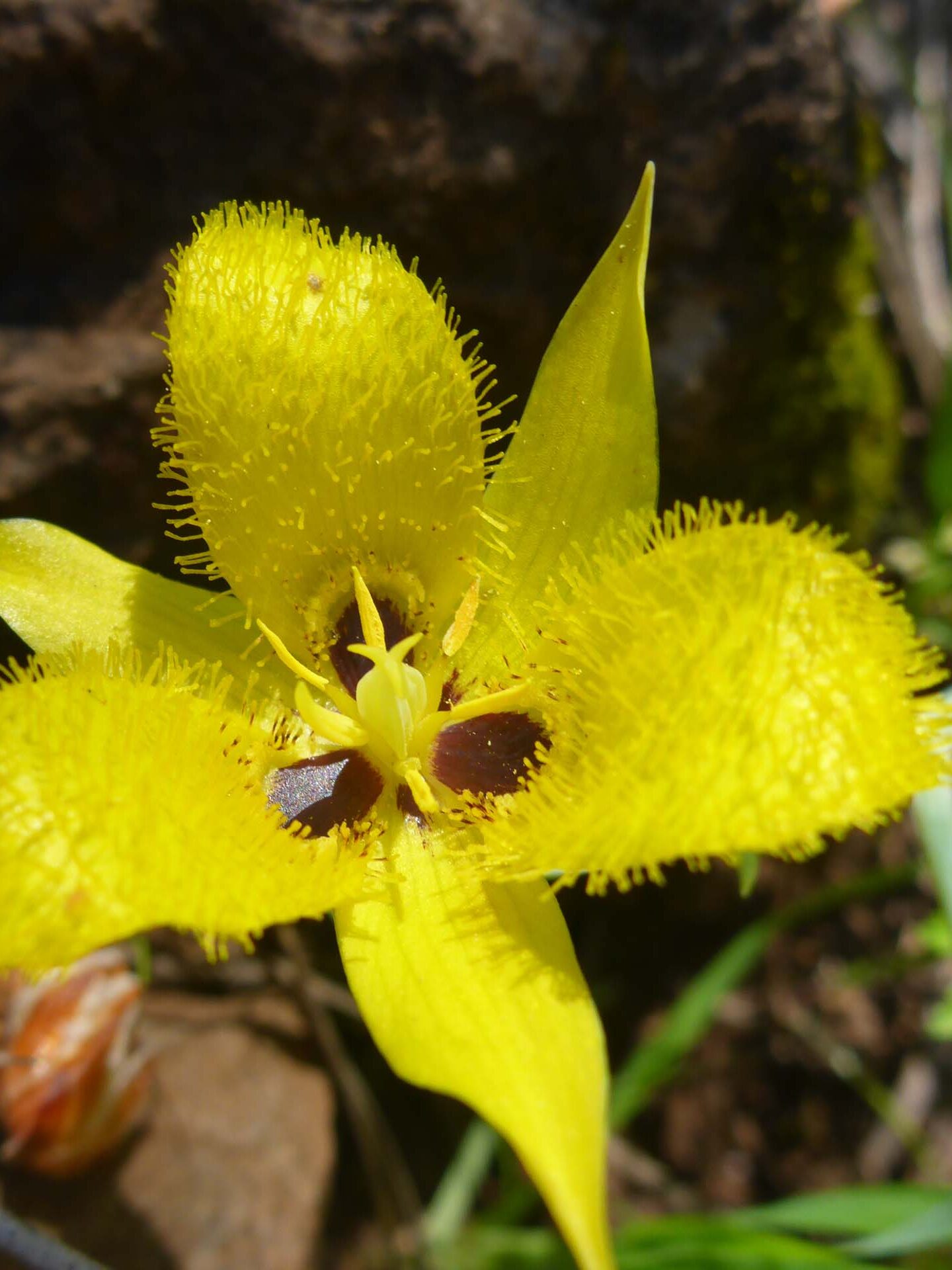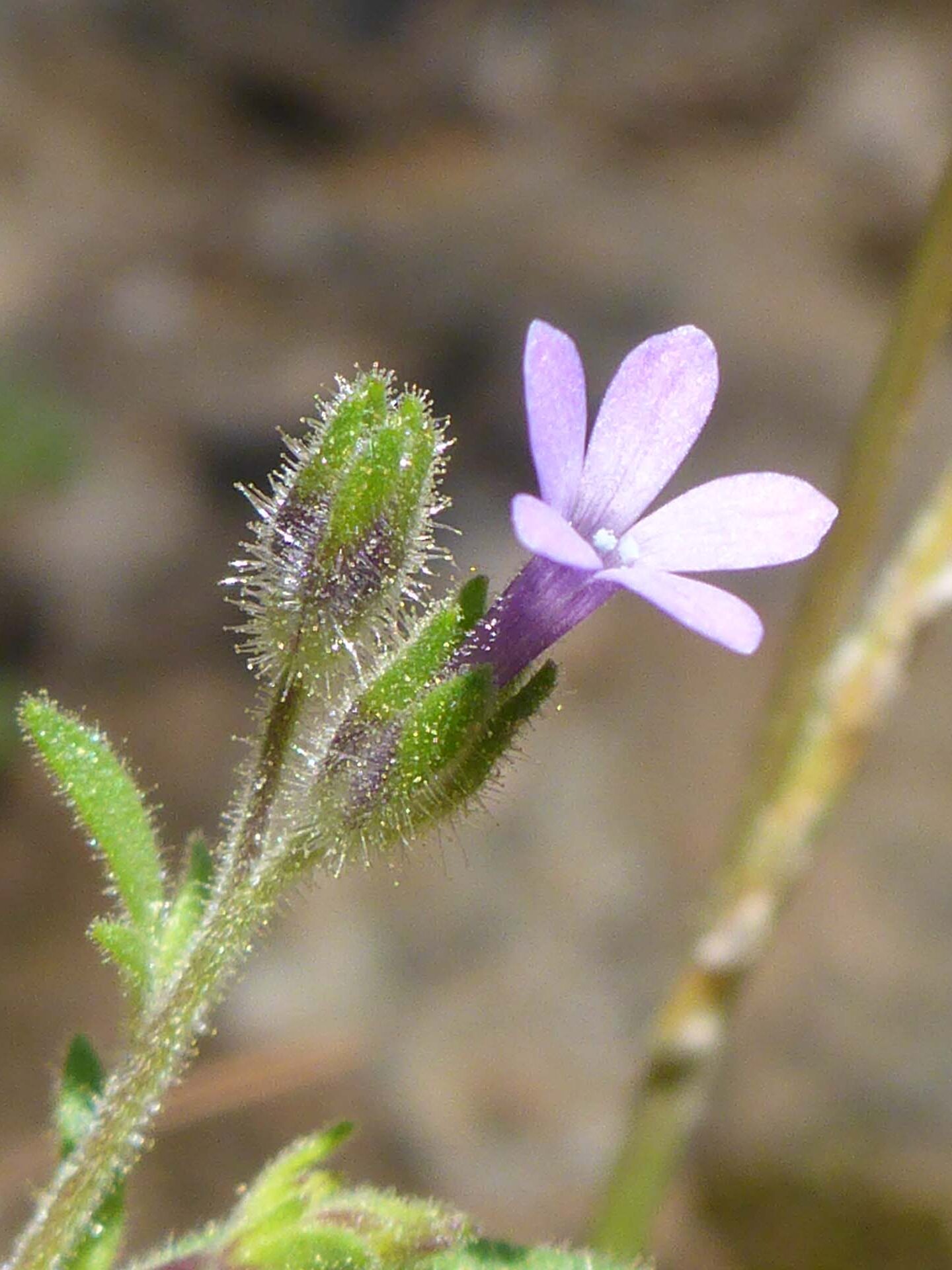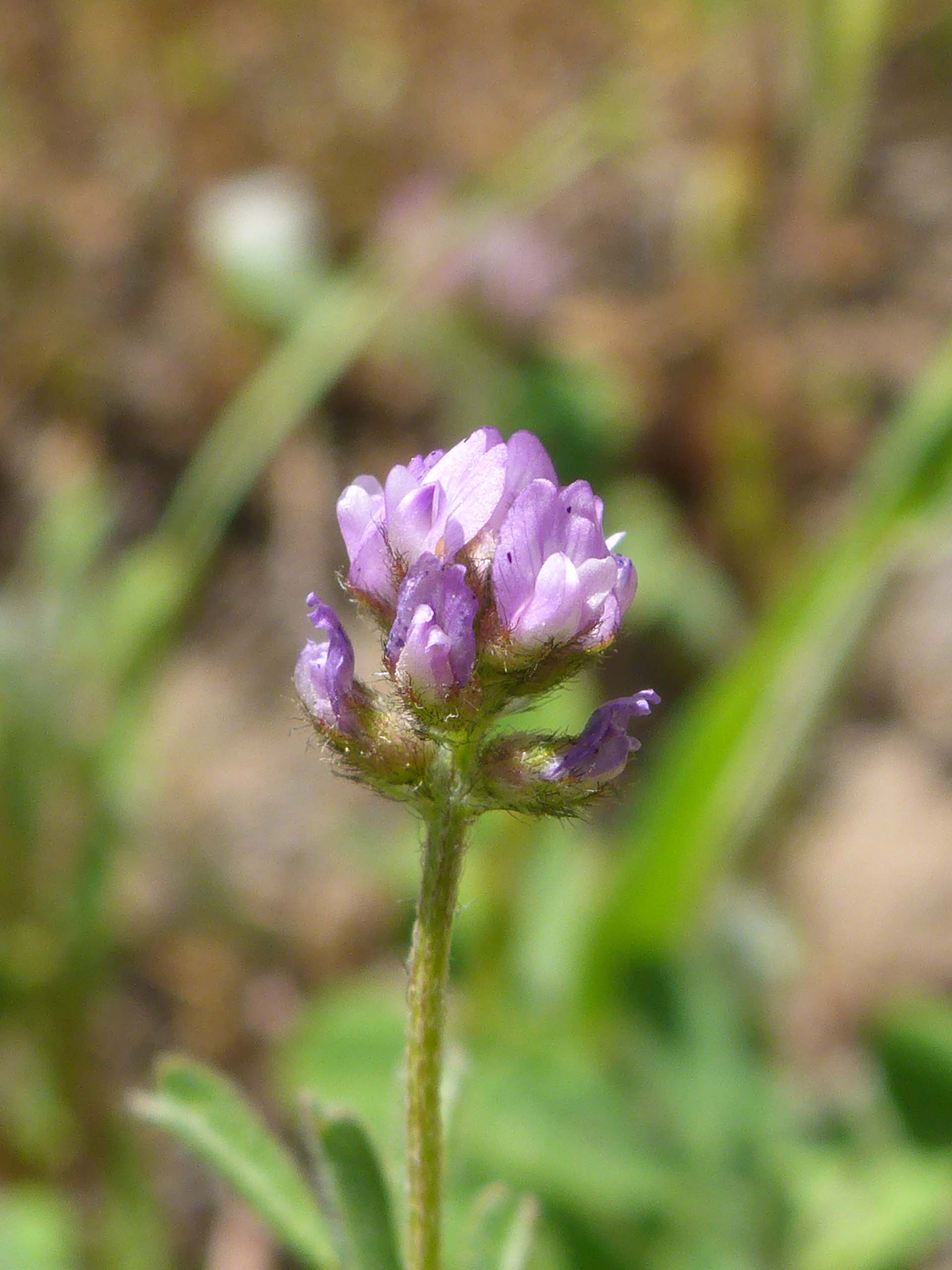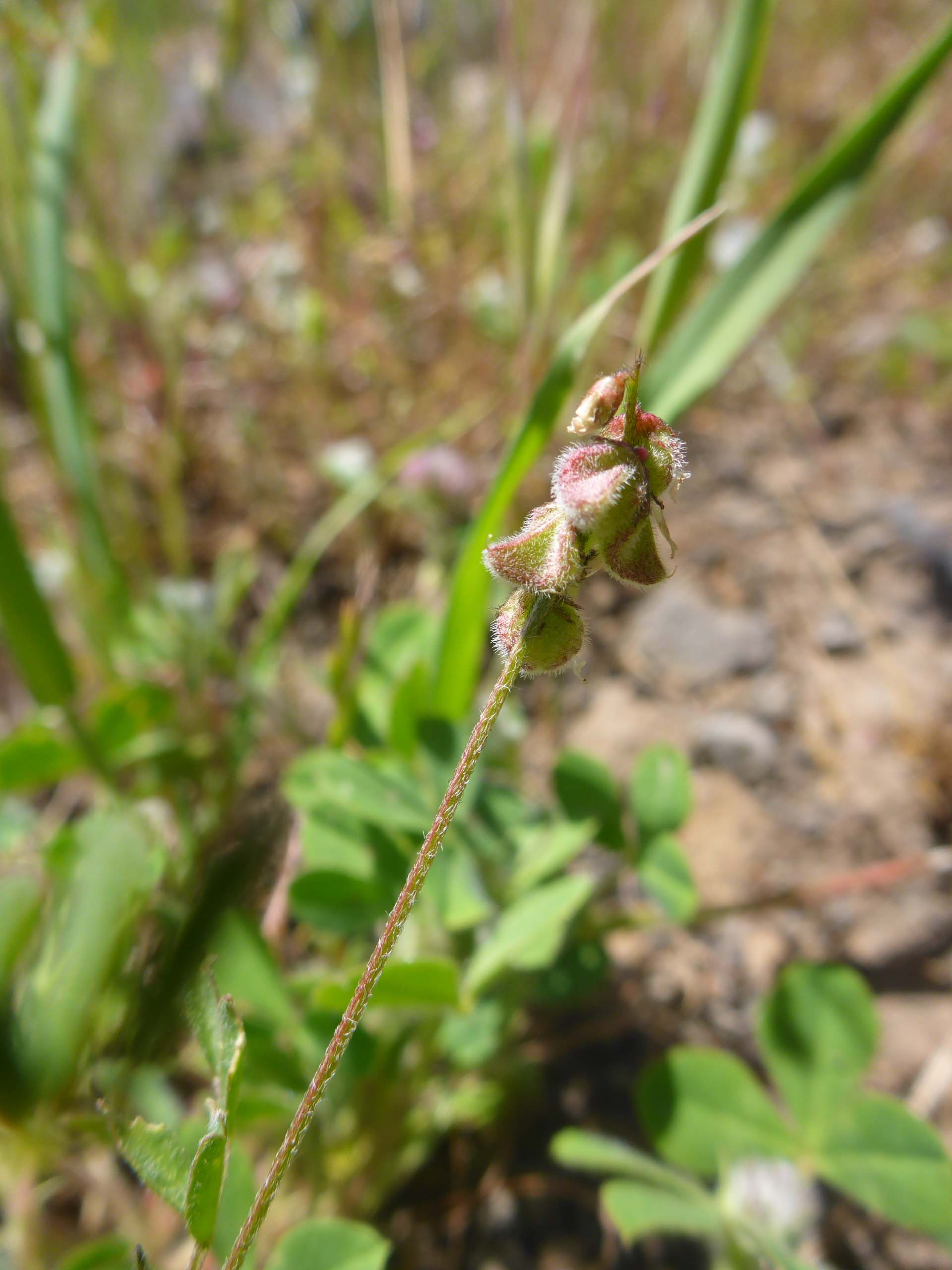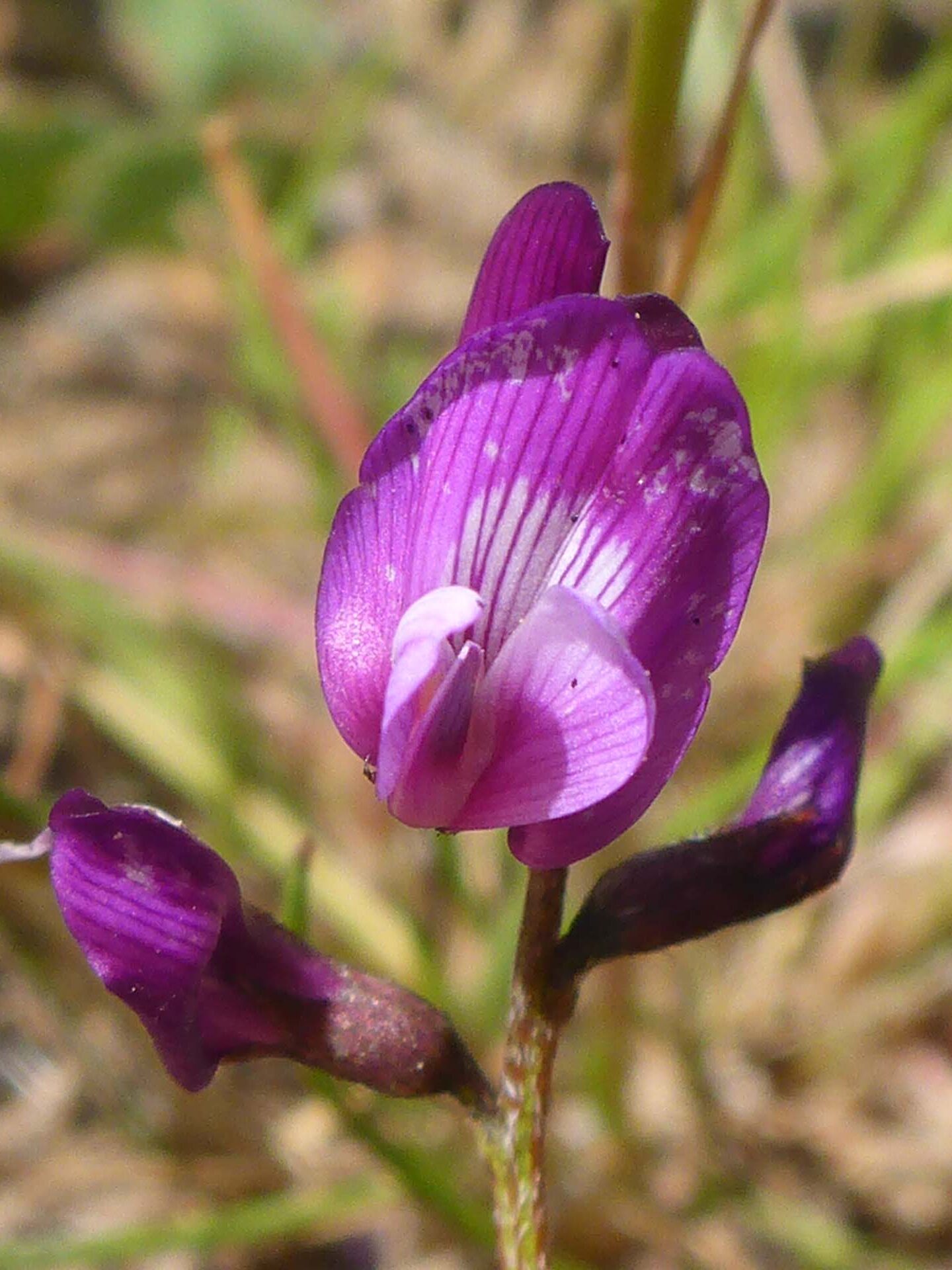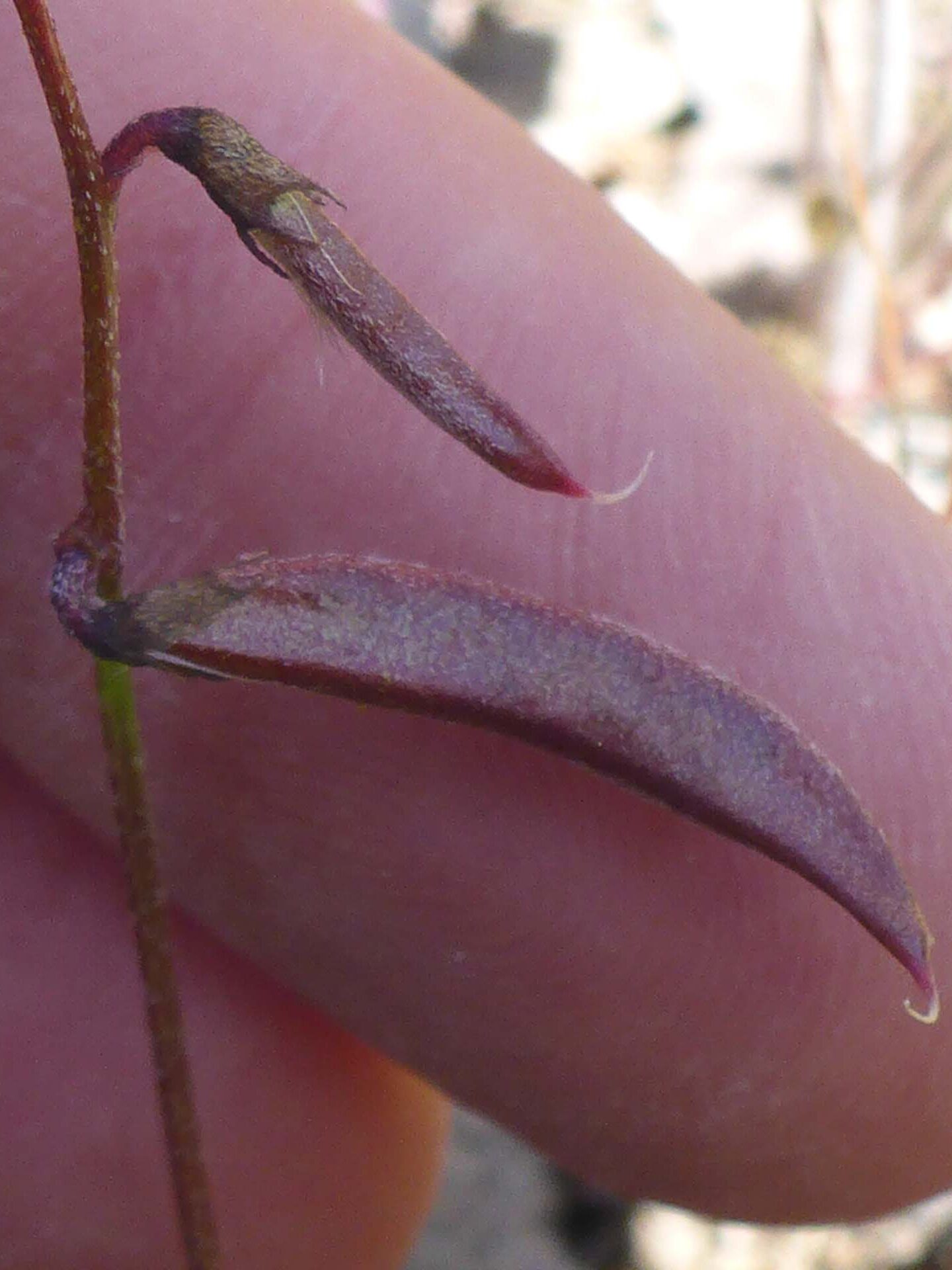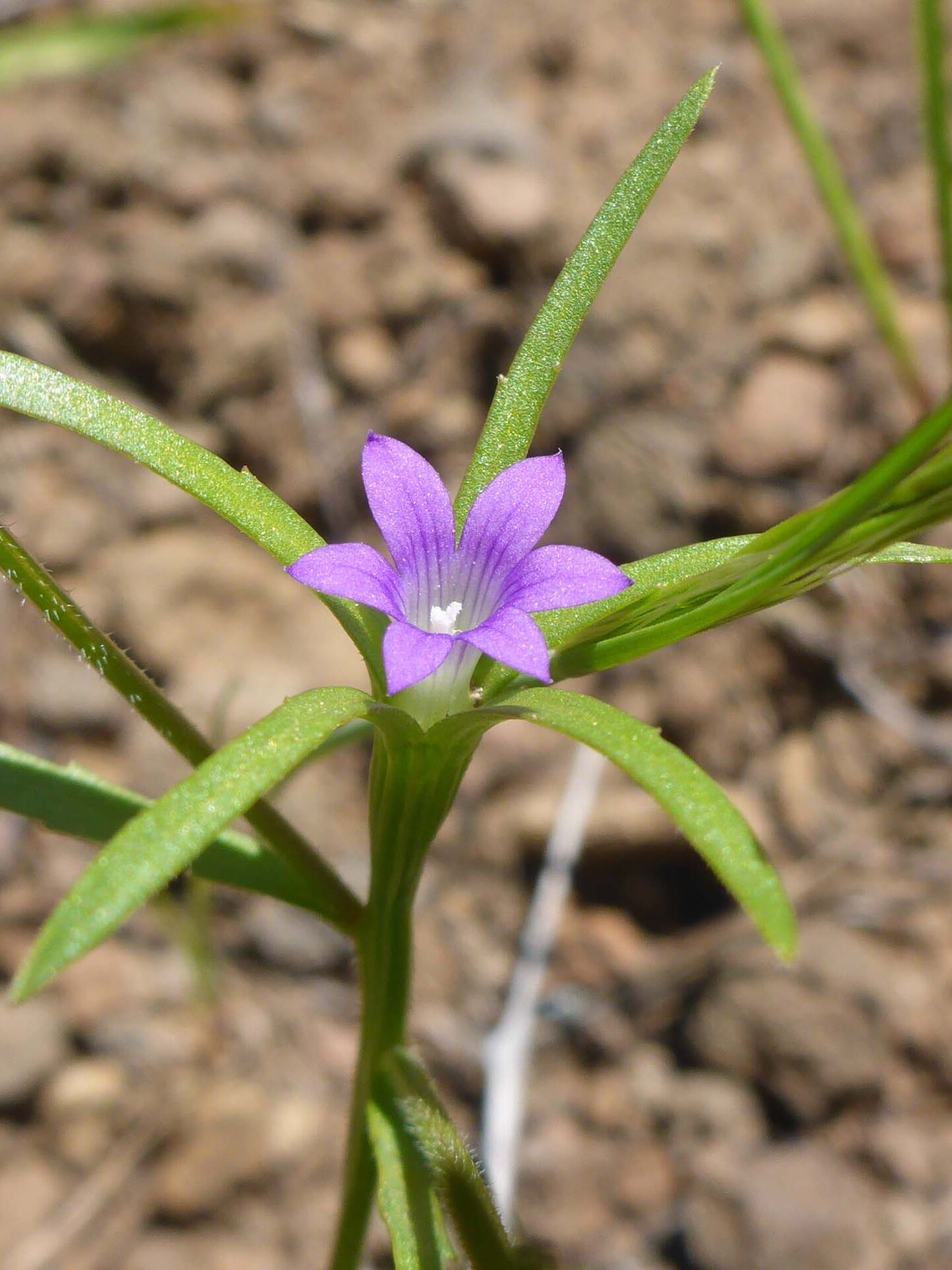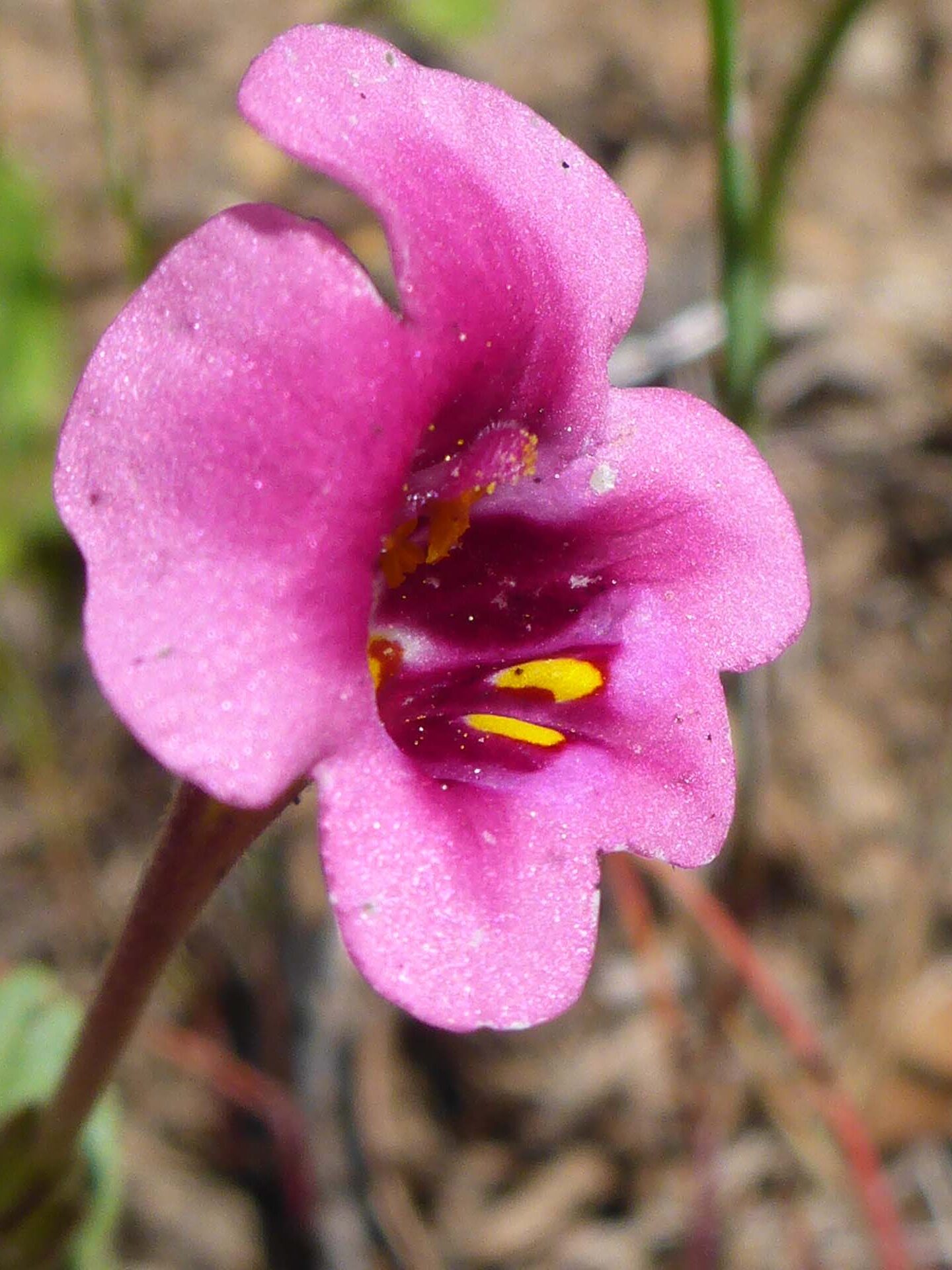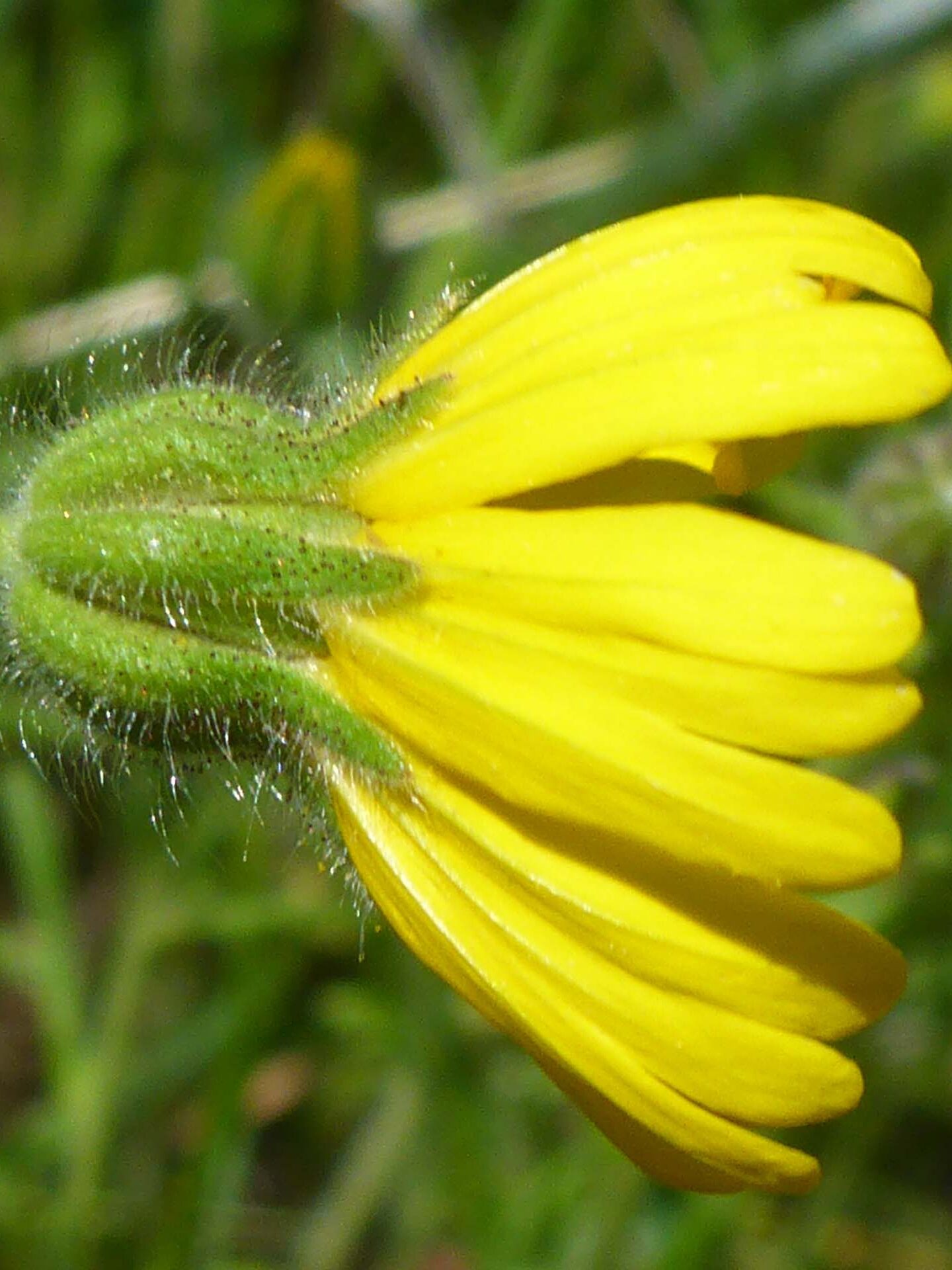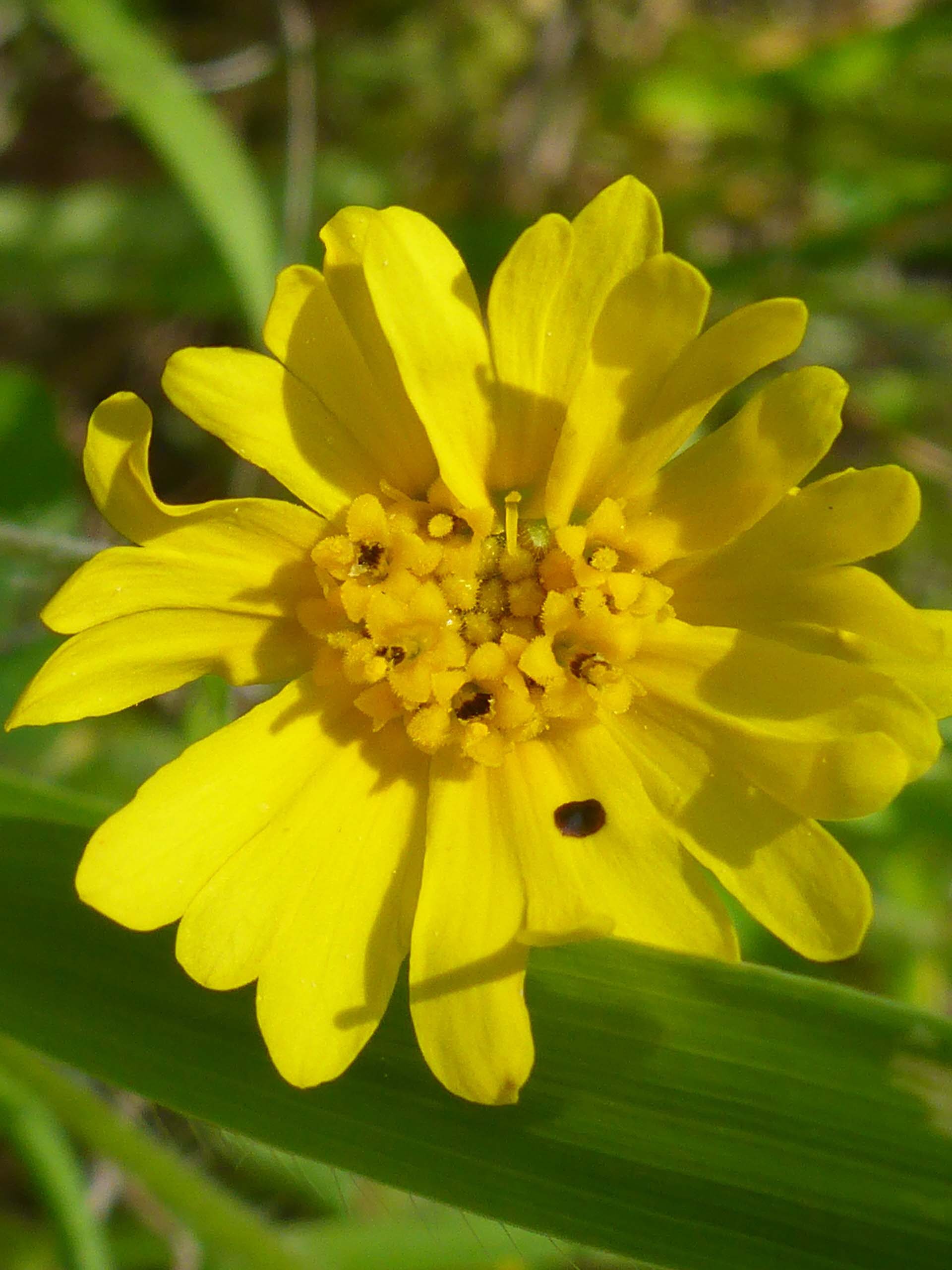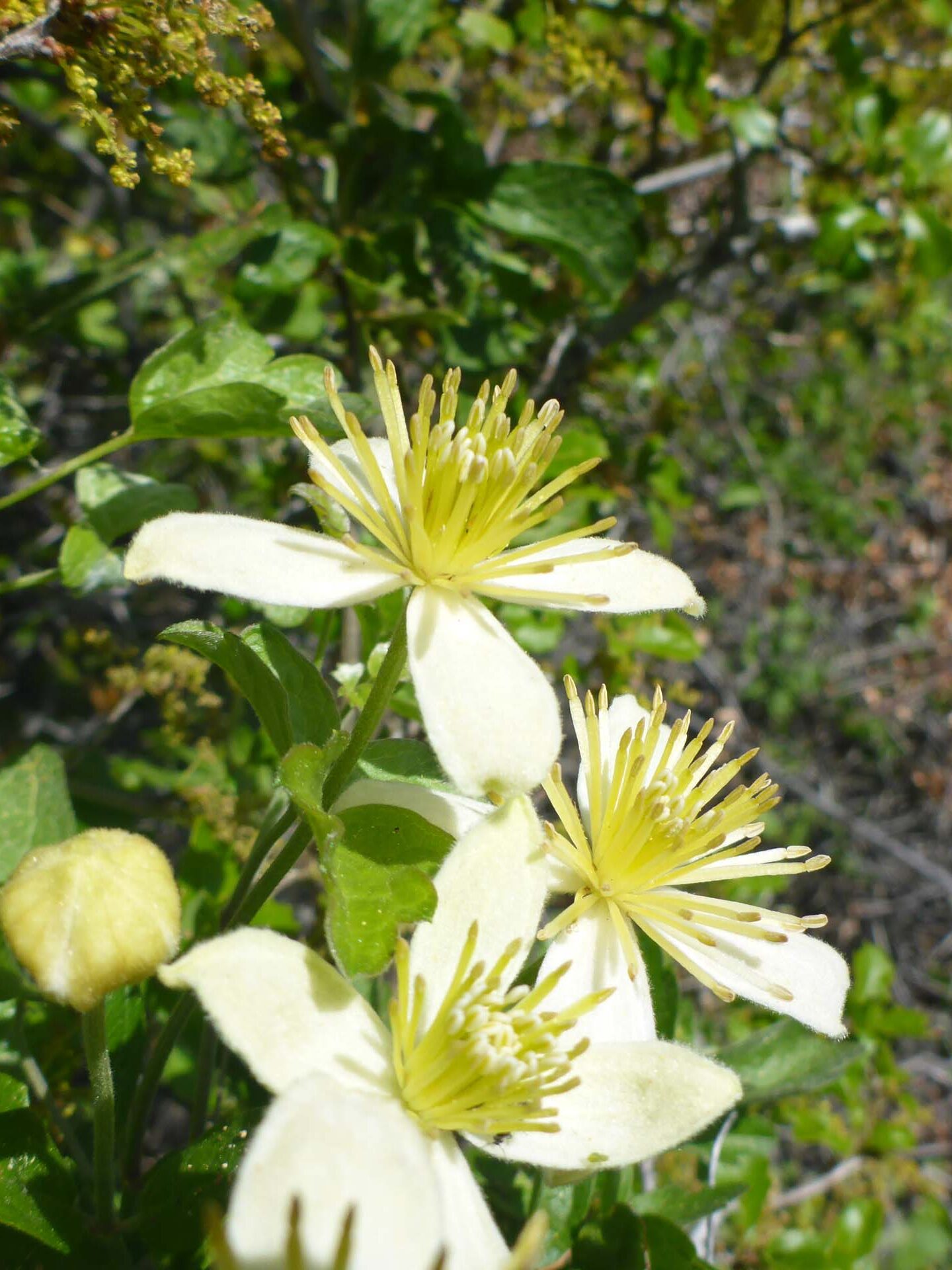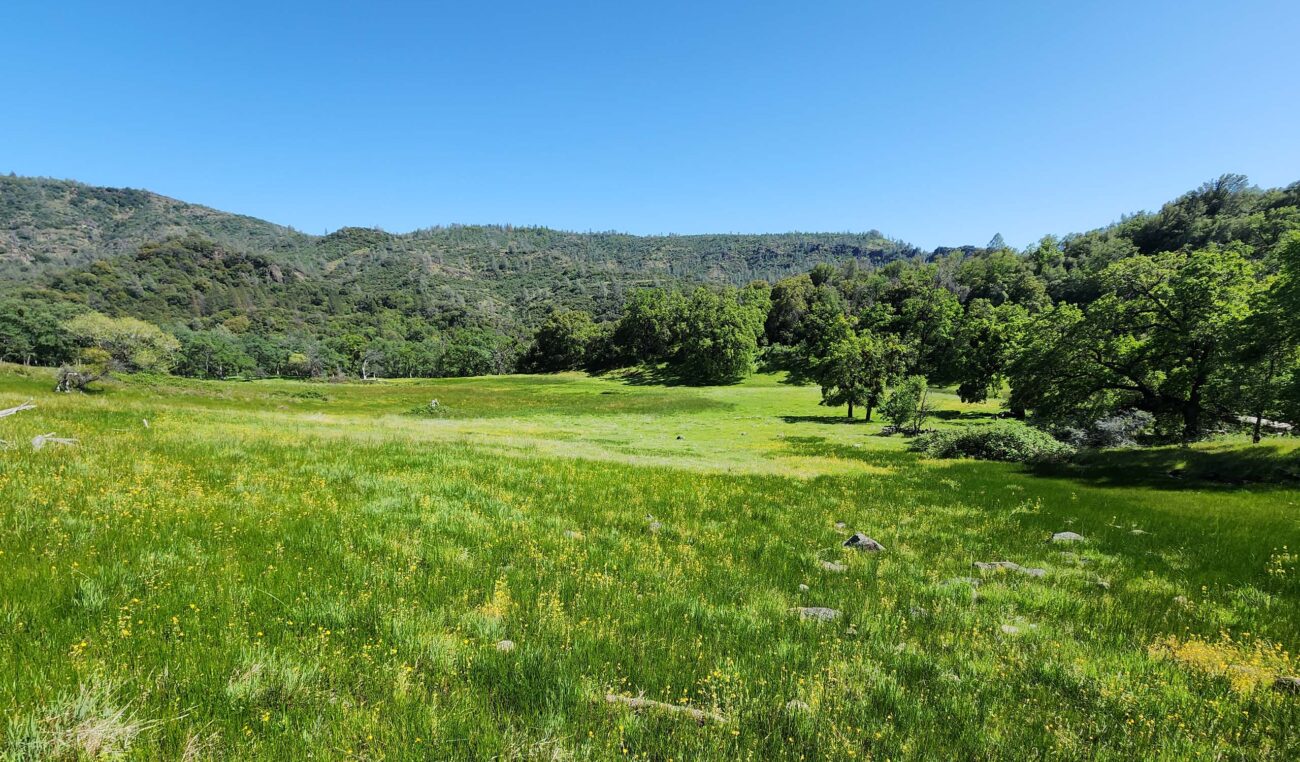
Photo taken April 28, 2024, by Don Burk.
When we hiked McClure Trail in March, we found an unusual plant growing in a wet seep near McClure Place, but not yet in flower. Once home, a little sleuthing indicated that it was a species of Hydrocotyle, the pennyworts—diminutive members of the Ginseng Family, and something we rarely see! Further sleuthing revealed that Vern Oswald had collected Hydrocotyle ranunculoides, floating marsh-pennywort, at McClure Place in 1999. But the leaves of the plant we saw were markedly different from floating marsh-pennywort: the plants we saw had round leaves with the petioles attached in the middle of the leaf, like an umbrella, while floating marsh-pennywort has lobed leaves with a deep cleft, and the petiole is attached at the base of that cleft. So, did we see a juvenile form of the leaf, and the cleft would develop later (which would be highly unusual!)? Or did Oswald make a mistake (which would be even more unusual!)? Another plant puzzle begging to be solved!
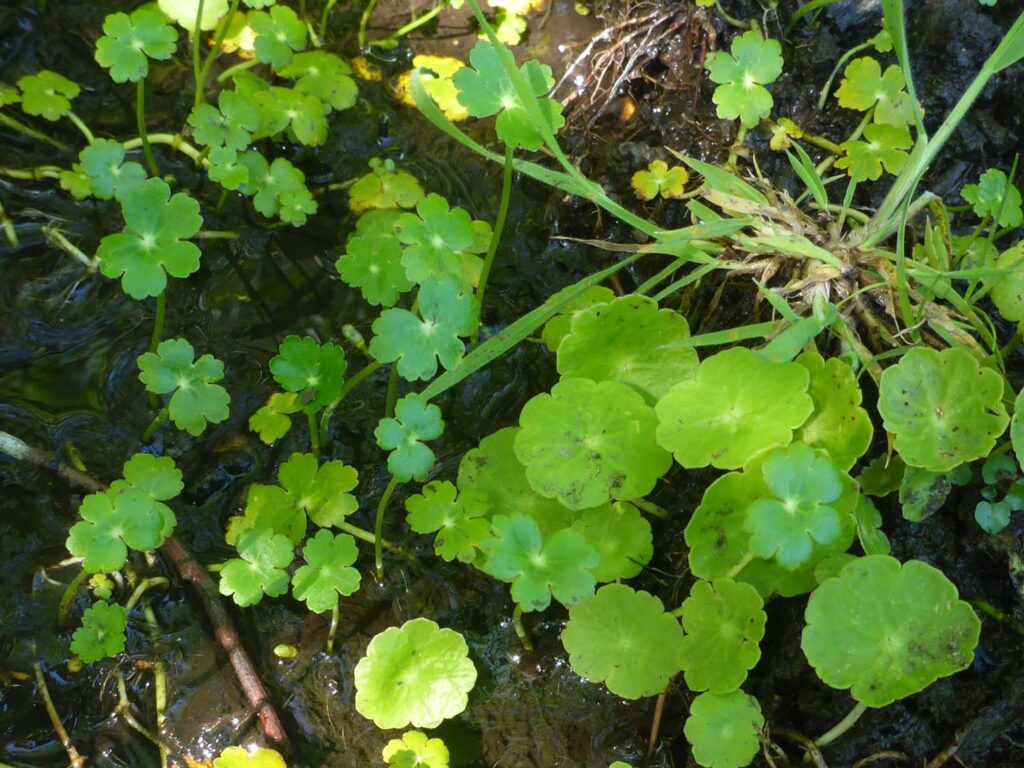
So, we decided to back to McClure Place in April, hoping to find the plants in flower. After tromping down the two-mile trail to McClure Place once again, we stopped at the first seep in the meadow and found floating marsh-pennywort in bloom—although one had to be on hands and knees with nose almost in the water to find the tiny flowers! And mixed in with the floating marsh-pennywort was a smattering of plants with umbrella-like leaves. We searched every seep in the meadow and found plenty of floating marsh-pennywort, but very little of the umbrella-leaf plant—and none of the latter was in flower. Our current hypothesis is that two species of pennywort are present. And whatever the umbrella-leaf species may be, it hasn’t previously been collected in Tehama County. But it will take yet another excursion and a bit of luck to put a name on the plant and call the mystery solved.
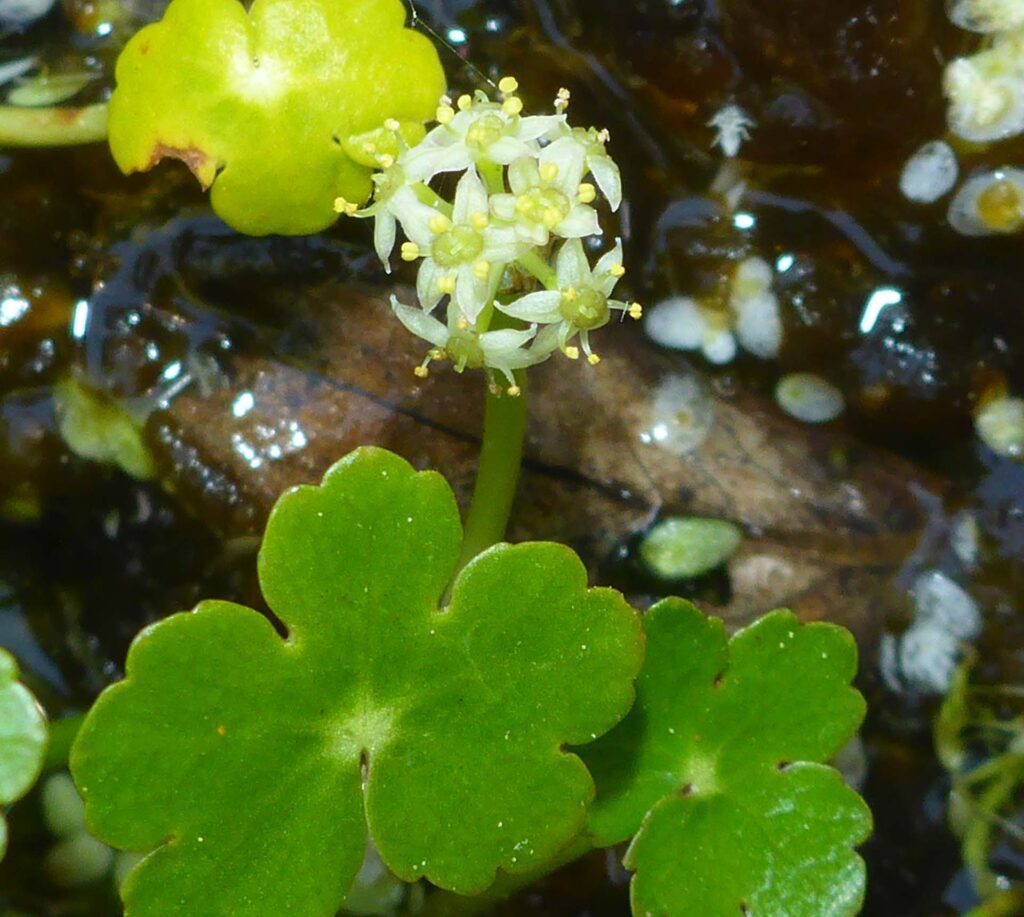
Even though we failed to complete our mission, we still had a great hike. Spring comes a tad later along this trail, which starts at ~3,000 feet in elevation and drops to ~2,200 feet at McClure Place. It’s a great place to catch up on spring blooms you may have missed in the valley and offers a huge assortment of other wildflowers as well. Blooming like crazy when we were there was yellow star-tulip. Grass-pinks and true babystars were also having a heyday. Here’s a slideshow of some of our favorite finds. All photos by Don Burk. Enjoy! ~Don & Laurie Burk

